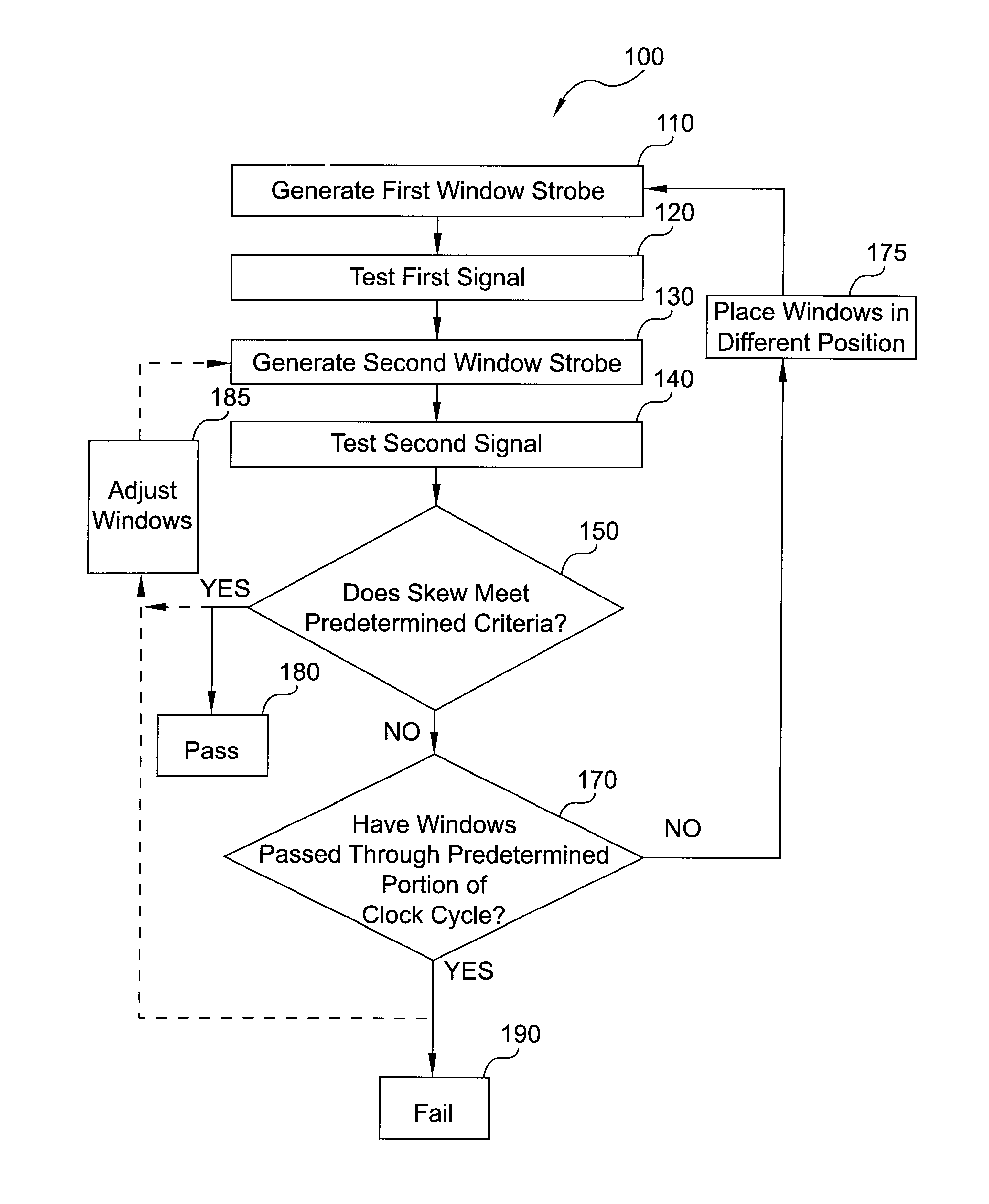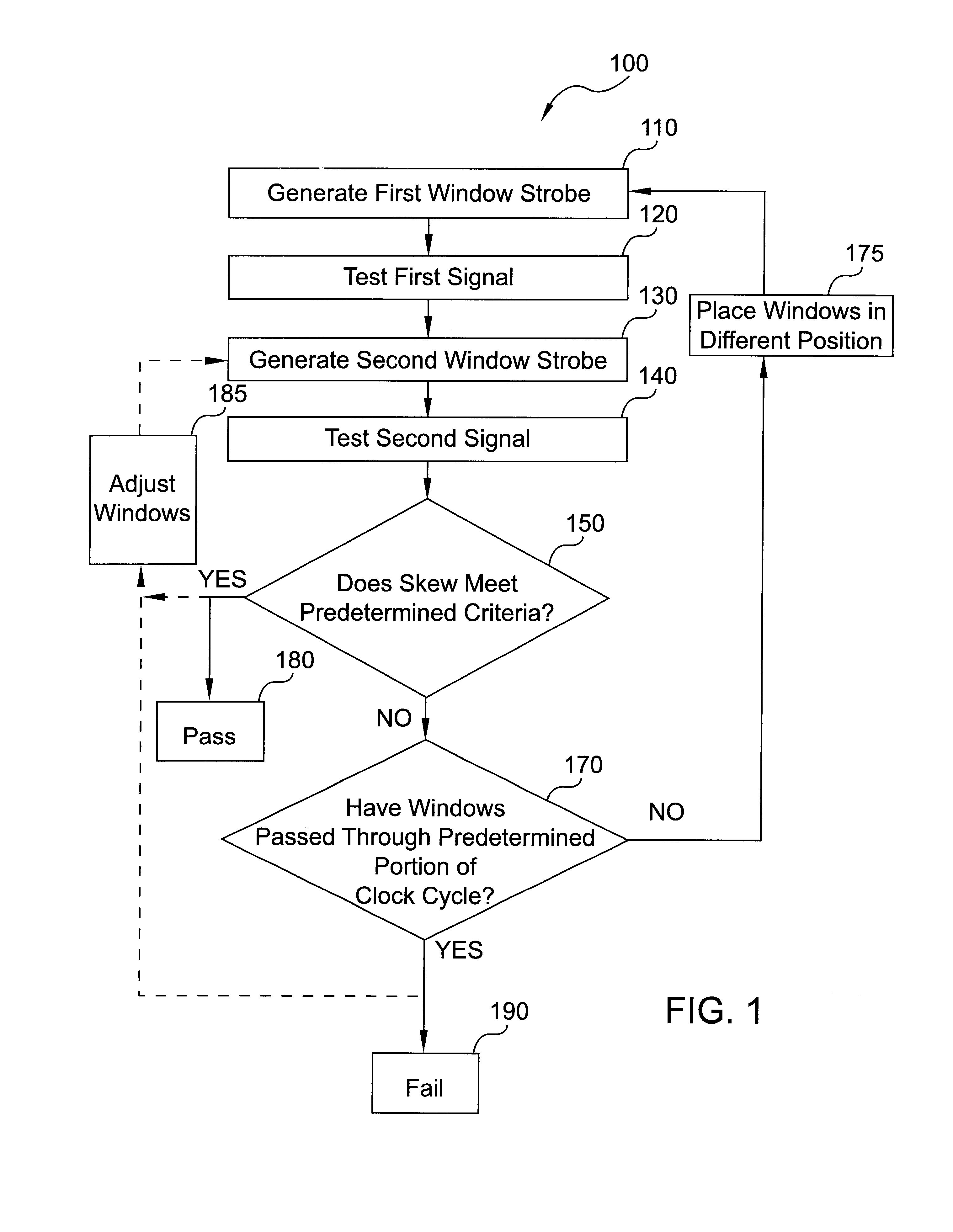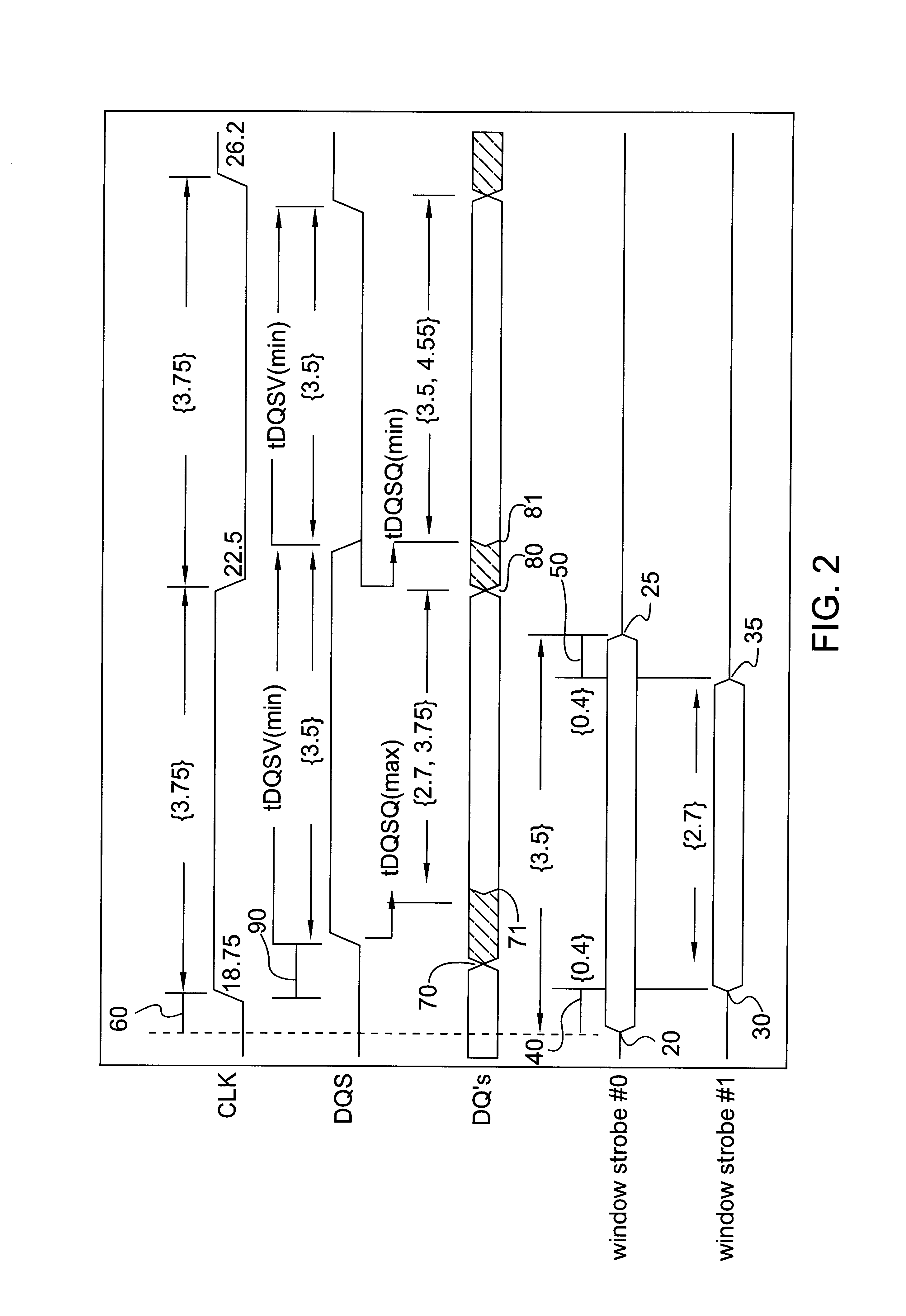Method for testing and guaranteeing that skew between two signals meets predetermined criteria
a technology of skew and signal, applied in the field of testing semiconductor devices, can solve the problems of incorrect data being read or written, computer chips become extremely complex, and incorrect data may be read
- Summary
- Abstract
- Description
- Claims
- Application Information
AI Technical Summary
Benefits of technology
Problems solved by technology
Method used
Image
Examples
Embodiment Construction
To overcome the problems of the prior art, the present invention generates two window strobes and uses the two window strobes to determine if skew between two signals meets predetermined criteria. One of the window strobes is used to test one of the signals, and the other window strobe is generated relative to the first window strobe. The second window strobe tests the other signal (or signals, if they are data signals). From the tests of the two window strobes, it can be determined if the skew between the first and second signals meets predetermined criteria. In particular, the two window strobes are placed relative to each other and to the signals being tested in such a way that when both window strobes indicate passing conditions, skew between the two signals is guaranteed.
The present method is applicable to any two signals where the first signal is longer in time than the second signal and where there is some minimum or maximum relative skew between the two signals. In the most ...
PUM
| Property | Measurement | Unit |
|---|---|---|
| valid time periods | aaaaa | aaaaa |
| time | aaaaa | aaaaa |
| offset time | aaaaa | aaaaa |
Abstract
Description
Claims
Application Information
 Login to View More
Login to View More - R&D
- Intellectual Property
- Life Sciences
- Materials
- Tech Scout
- Unparalleled Data Quality
- Higher Quality Content
- 60% Fewer Hallucinations
Browse by: Latest US Patents, China's latest patents, Technical Efficacy Thesaurus, Application Domain, Technology Topic, Popular Technical Reports.
© 2025 PatSnap. All rights reserved.Legal|Privacy policy|Modern Slavery Act Transparency Statement|Sitemap|About US| Contact US: help@patsnap.com



